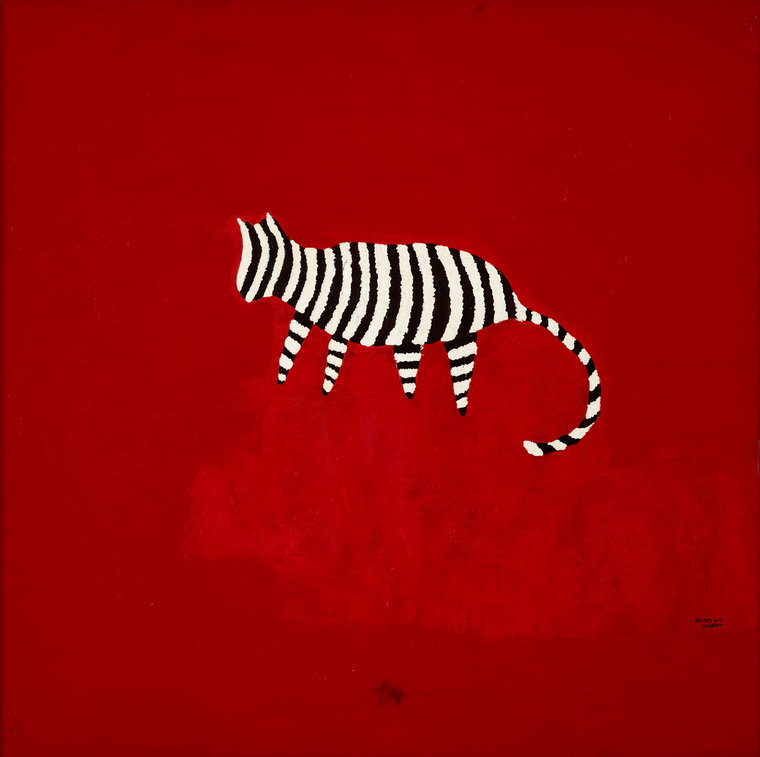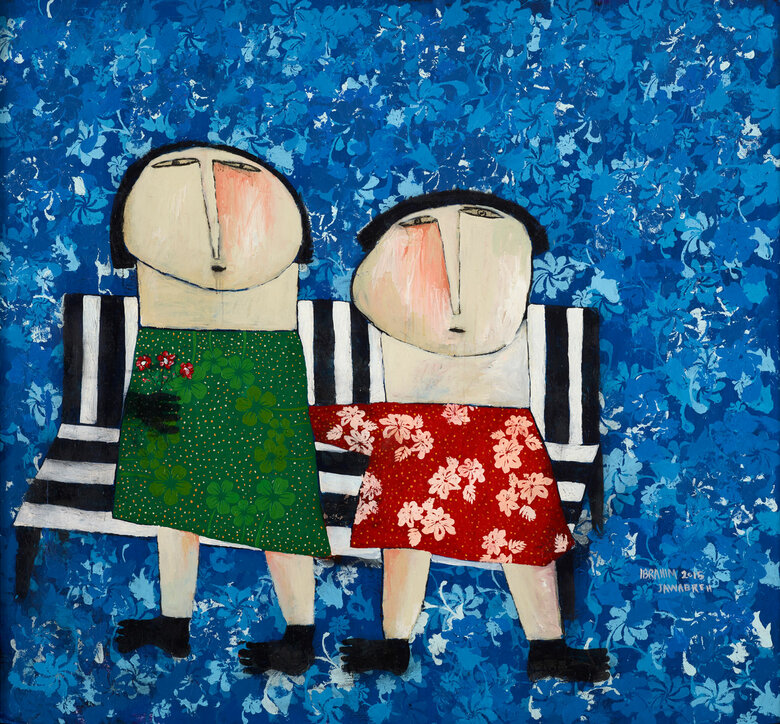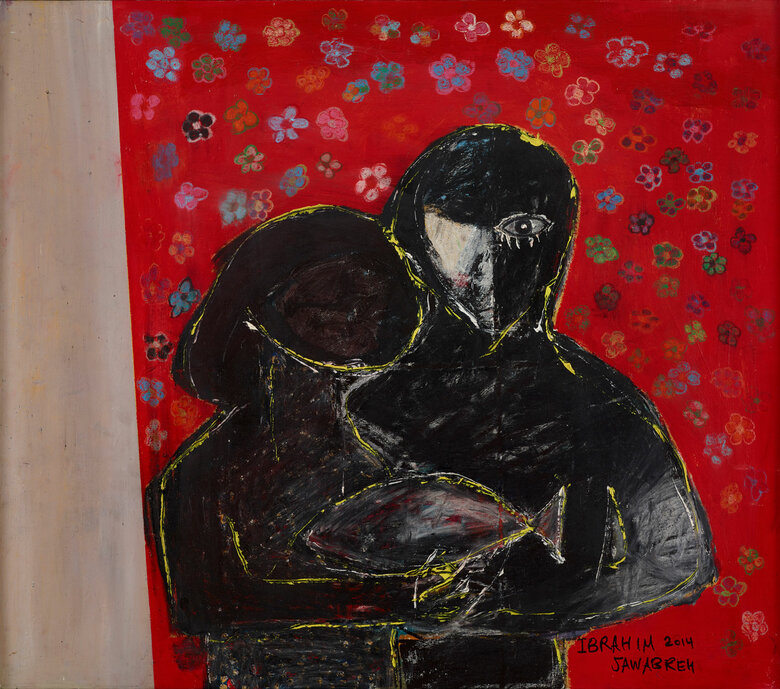Executed with acrylic on canvas, Untitled, 2015, features a cat’s flat figure, striped in black and white, against a monochromatic ruby red background. Placed at the upper center of the painting’s composition, the cat is undoubtedly the work’s focal point. Still, we notice a mass of smudged bright red paint below the cat’s legs. The murky red color, occupying the painting's lower center, reflects the cat’s casted shadow, generating an eerie feel.
This painting is part of a series of images created by Jawabreh. Some of which, were showcased at his 2015 solo exhibition entitled Another Place, organized in Amman, Jordan. Through such paintings, Jawabreh invites the viewer to enter an imaginary childhood world of deceptively flat, simple figures – representing family members, pets, and plants.
Jawabreh’s naïve style – simple forms, vibrant colors, and childish renderings – urges the viewer to look beyond what is portrayed. Drawing from icon painting, the artist depicts a single, central figure in a squarish composition. The reduced graphical representation of a cat has no facial features. Instead, we only see the contour of the animal’s figure, small face, pointed ears, four legs, and delineated stripes insinuating the animal’s feline nature.
The cat’s iconic figure brings about an ominousness that contrasts swiftly with the innocence and cheerfulness of the vibrant background and the black-and-white renderings. Indeed, the limited color palette and the monochromatic backdrop are charged with symbolism. For instance, the bright red background refers to the warmth and love of the familial nest. But, on the other hand, the black and white stripes evoke borderlines, demarcation, and separation. This further strengthens the unsettling gloom within the rosy context. In prompting viewers to examine complex existential questions through clear and straightforward renderings, the artist skillfully captures children's innocent yet paradoxically profound curiosity.
Jawabreh addresses separation, loss, and memory in his artistic practice. The cat, specifically, is central to his art. It is symbolic of family and home, and is reminiscent of his deceased younger brother. Pet cats are omnipresent in Palestinian households, specifically in Jawabreh’s family house. Born in the al-Aroub refugee camp in Hebron, Palestine, Jawabreh recalls their pet cat resting on his young brother’s chest. The cat disappeared when Jawabreh’s brother died. The neighbors at the al-Aroub refugee camp believe that the cat is the young boy’s guardian angel. As such, Jawabreh, a refugee within his homeland, highlights the undermined existence of his people and the suffering incurred from displacement and lost family members.








